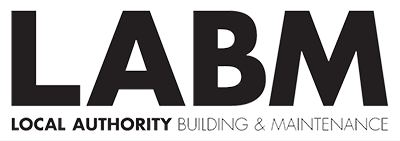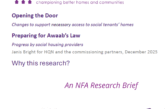
The exclusive research from NEC Contracts, Smarter, greener, together: the factors driving change in our industry’, offers the first comprehensive view of where the sector truly stands in 2025 across three game-changing areas that will define our future: sustainability, collaboration, and digital adoption.
Exploring the views of over 250 built environment professionals, including opinion from senior figures across civil engineering, utilities and government bodies, the report offers a fascinating insight into the industry’s direction of travel and what the future holds.
Adoption of Digital Technologies
‘Smarter, greener, together’ reveals that real opportunity lies in creating digital workflows that enhance the collaborative principles underpinning successful project delivery. When digital tools support mutual trust and cooperation rather than create additional barriers, transformational results follow. The industry’s challenge is moving beyond reactive adoption to strategic implementation that serves project outcomes.
Key findings include:
- 40% of respondents say their organisation has a clear digital roadmap and are implementing it, with a further 26% saying digital is currently core to their business and operations.
- Efficiency improvements (61%), quality control (53%) and improved project control (49%) were the most common drivers for adopting digital technologies.
- The biggest barriers to adoption were ‘cost of implementation’ (44%) followed by ‘lack of inhouse expertise’ (30%). These issues are felt most keenly by public sector clients with 67% saying cost was a barrier and 62% saying lack of in-house expertise – both well above the average for all respondents.
- BIM adoption was found to be high among the public sector. A total of 95% of participants in this sector stated that BIM is either fully integrated or approaching full adoption.
- 90% of participants in public sector organisations said digital contract management was ‘fully integrated’ or ‘approaching full adoption’.
- 79% of respondents agree that ‘using digital technologies is crucial to attract new people into the industry’.
Sustainability
The report finds much of the sector still in the early stages of a transition, with sustainability targets and contractual mechanisms not yet widely adopted. This presents both a challenge and an opportunity. Collaborative approaches naturally align with sustainable outcomes – and when all parties share risks and rewards, efficient resource use and waste reduction become collective priorities rather than individual concerns.
Key findings include:
- 81% of respondents in the public sector agreed the industry is taking sustainability seriously.
- 25% of all respondents said sustainability targets are substantially transforming many elements of contracts.
- More than half (52%) of those in the public sector said they are ‘very aware’ of sustainability focused optional clauses such as NEC Option X29
- In terms of the focus of these clauses, 67% in the public sector have set targets on carbon impact and water usage during construction, 62% had objectives for minimising water usage of the finished building and 57% said the operational emissions of the finished building
- 72% of all respondents said more projects should include sustainability focused optional contract clauses.
Collaboration
The research highlights a significant gap between ambition and implementation in collaborative contracting. Whilst the industry recognises the value of collaboration, it faces practical barriers to implementation, with wider adoption requiring training, cultural shifts and the confidence to do things differently.
Key findings include:
- In the public sector 33% said all their projects use collaborative contracts.
- In the public sector, the benefits of collaborative contracts are very widely recognised. 95% said they led to improved costs, higher efficiency and better knowledge transfer. These respondents were also very positive about the benefits of minimised disputes (85%) and shared risk (80%).
- In terms of barriers to more widespread adoption of collaborative contracts, the findings highlighted that a need for training is felt most keenly in sectors such as specialist and subcontractors, where 63% identified it as a barrier, and the public sector where three-quarters (75%) felt it was holding back the use of collaborative contracts.
- Overall, 82% felt positive about a more widespread adoption of collaborative contracts, with 45% saying it would significantly improve the industry.
- 32% of all respondents thought that cloud based collaborative contract drafting technologies and innovations will have a significant impact on the built environment sector in the next five years, 20% think they will have a major impact.
Welcoming the findings of the report, Andrea Naylor, Managing Director, Thomas Telford Ltd. concluded: “The report reveals an industry that understands the direction of travel and requires support on the way. What excites us most is that the findings show an industry ready for transformation. We see digital transformation, sustainability and collaboration not as separate challenges but interconnected elements that need to be brought together effectively to achieve a fundamental shift towards more intelligent, efficient and equitable project delivery. The most successful projects of the future will be those that integrate these elements seamlessly, and that’s exactly what the right contractual framework can enable.”
The full report can be downloaded at www.neccontract.com/research









